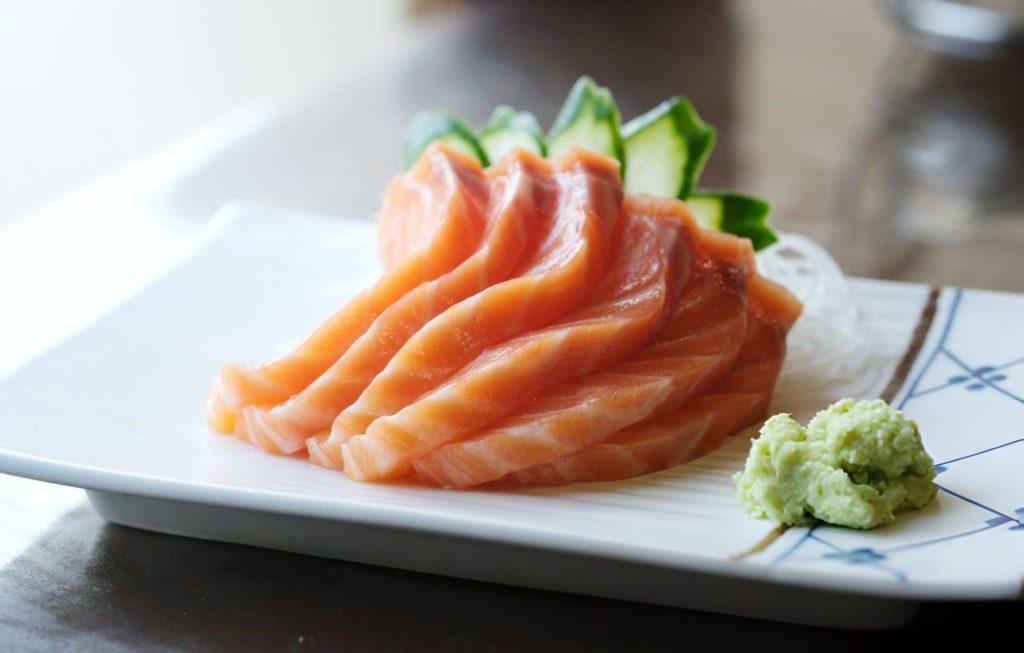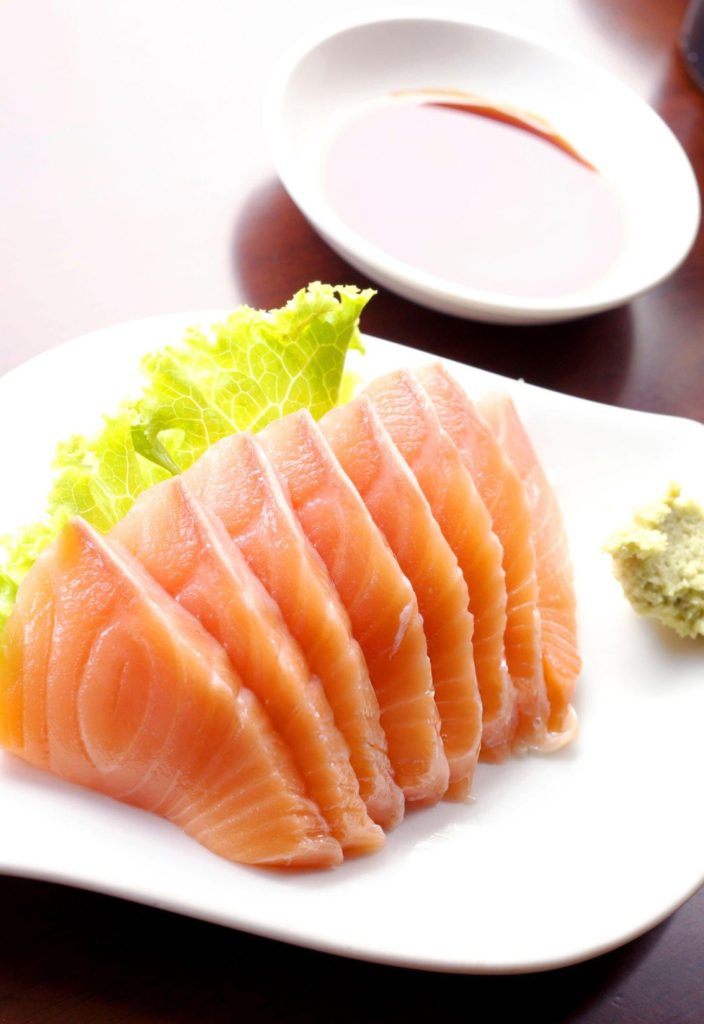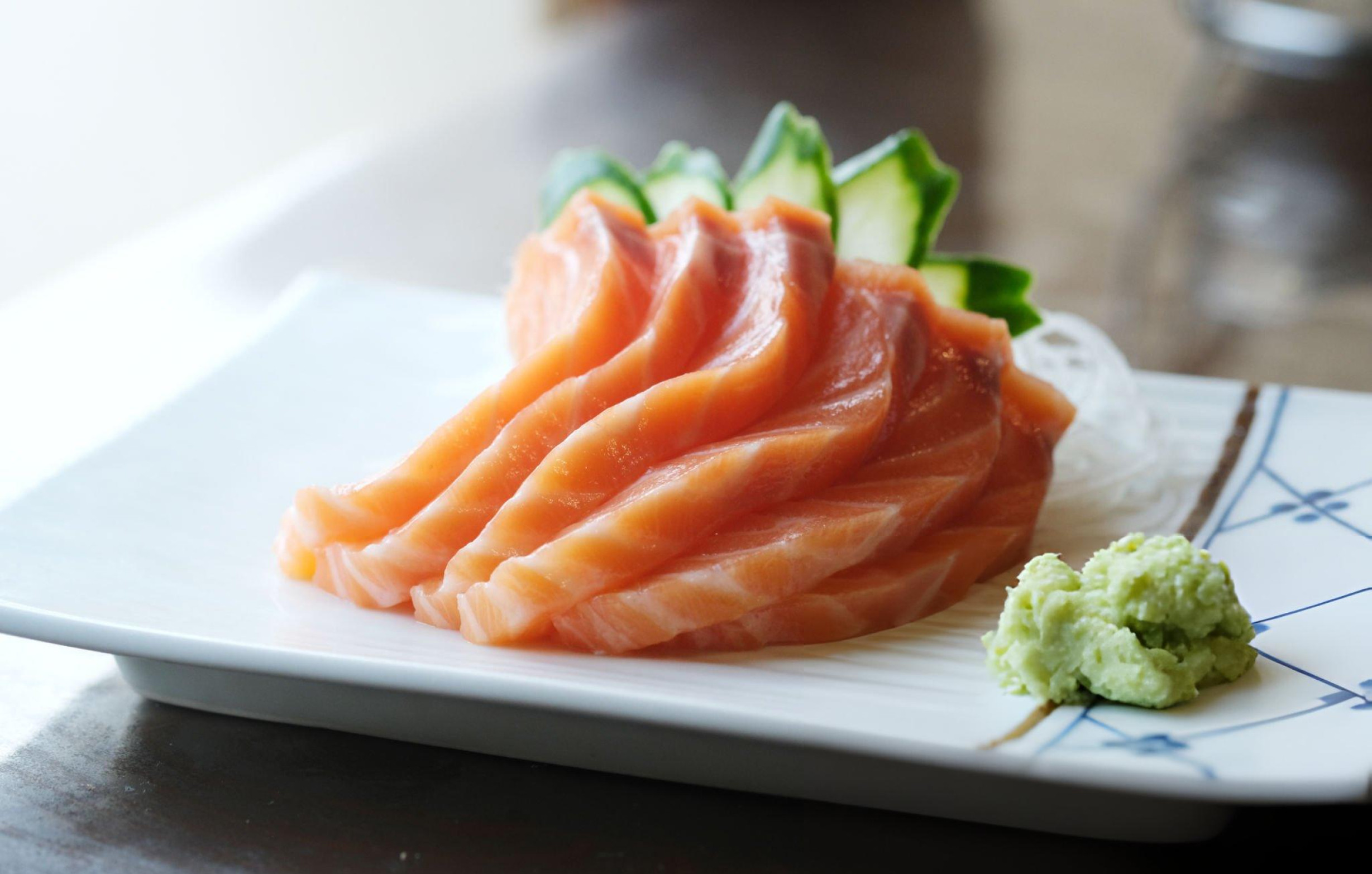Sashimi Recipe
Sashimi is a timeless dish in Japanese cuisine, revered for its purity and simplicity. This preparation of raw fish emphasizes freshness and showcases the clean, delicate flavors of high-quality seafood. Its beauty lies in the artful presentation and the way each bite delivers a perfect balance of taste and texture. Whether enjoyed as an appetizer or a light meal, sashimi captures the essence of Japan’s culinary tradition, where simplicity and the quality of ingredients reign supreme.

The beauty of sashimi lies in its minimalist approach—highlighting only the freshest fish, a few carefully chosen garnishes, and the sharpness of soy sauce and wasabi. Despite its simplicity, the dish offers a feast for the senses, from the pristine appearance of the slices to the vibrant interplay of textures and flavors in every bite.
Ingredients for Sashimi
Sashimi’s elegance is derived from the quality of its ingredients. First and foremost, the fish must be sashimi-grade, meaning it is of the highest quality and safe to eat raw. Tuna, yellowtail, and salmon are popular choices for their buttery texture and mild flavor. The daikon radish, sliced thinly and julienned, adds a refreshing crunch to the plate, while the shiso leaves provide a herbal, almost minty undertone that balances the richness of the fish. Wasabi and soy sauce are essential accompaniments, each contributing a spicy, salty depth to the overall flavor profile.
Freshness is the most important factor in making sashimi. When selecting fish, make sure it’s labeled as sashimi-grade, indicating it has been frozen and handled under strict standards to prevent contamination. The other ingredients, such as daikon radish and shiso leaves, must be equally fresh to complement the raw fish. Crisp radish and vibrant shiso leaves not only add flavor but also enhance the presentation of the dish.
Step-by-Step Preparation Instructions
To create the perfect sashimi, precision and care in preparation are key.
Preparing the Daikon Radish:
Begin by peeling the daikon radish to remove its slightly bitter skin. Using a mandolin or a sharp knife, slice the radish finely into thin rounds. Stack a few slices together and cut them into fine julienne strips. To achieve a delightful crunch, soak these strips in cold water for around 15 minutes. Once they’ve crisped up, strain and pat them dry to remove any excess moisture. The radish not only adds a cooling element to the plate but also offers a satisfying textural contrast to the soft fish.
Slicing the Fish:
When slicing tuna and yellowtail, aim for pieces that are around 1/4″ to 1/3″ thick (6 mm to 8 mm), making sure each slice is even and smooth. A sharp knife is essential here to maintain the integrity of the fish’s texture. For salmon, a slight angle while cutting can help achieve thinner, delicate slices that are visually appealing. Each slice should be uniform in thickness to ensure an even mouthfeel when eaten. Mastering the art of slicing sashimi is key to presenting a polished dish.
Final Presentation:
The presentation of sashimi is just as important as its preparation. Arrange the sliced fish delicately on a plate, alternating colors to create visual contrast. Place the crisp daikon radish alongside the fish, with shiso leaves scattered strategically for an added pop of green. Add a dollop of wasabi on the side and serve with a small dish of soy sauce for dipping. The finished dish should feel balanced, both in appearance and in taste.

Recipe Tips
- Always use a sharp knife to ensure clean cuts and preserve the texture of the fish.
- Keep the fish as cold as possible before slicing to maintain its freshness and prevent any unwanted bacteria growth.
- If you want to experiment with the presentation, try incorporating thinly sliced cucumbers or a variety of seaweed for added texture and flavor.
- Leftover fish should be stored in the fridge, tightly wrapped in plastic, and consumed within 24 hours for optimal freshness.
What to Serve With This Recipe
Sashimi is a versatile dish that pairs well with a variety of side dishes. Steamed white rice is a classic accompaniment, its mild flavor providing a neutral base that allows the sashimi’s freshness to shine. A small bowl of miso soup, with its umami-rich broth, adds warmth to the meal. Pickled ginger is traditionally served alongside sashimi, offering a sharp contrast that cleanses the palate between bites. For a refreshing beverage, pair your sashimi with a light sake or a warm cup of green tea to complete the dining experience.
Frequently Asked Questions
- Can I use frozen fish for sashimi?
Yes, but only if it’s labeled as sashimi-grade. Frozen fish is typically used to kill any parasites, making it safer to consume raw. - How do I know if the fish is sashimi-grade?
Sashimi-grade fish will be clearly labeled as such and should be purchased from a trusted source. It has been frozen and handled under strict safety standards to ensure it’s safe to eat raw. - What other types of fish can be used for sashimi?
Aside from tuna, yellowtail, and salmon, you can use halibut, mackerel, or scallops. Each brings its own unique flavor and texture to the dish. - Is it necessary to have a mandolin for slicing the daikon radish?
A mandolin helps achieve even, thin slices, but a sharp knife can work just as well if handled with precision.
Troubleshooting Common Issues
- What to do if the fish doesn’t slice smoothly:
Make sure your knife is razor-sharp. If the fish is too soft, try chilling it in the freezer for a few minutes before slicing to firm it up. - Fixes for soggy daikon radish:
Ensure the radish is soaked in cold water long enough, and be sure to pat it dry thoroughly before plating to avoid excess moisture. - Adjustments for varying tastes:
If you or your guests prefer more heat, increase the amount of wasabi served on the side. For a more savory experience, a few drops of soy sauce directly on the fish can heighten its flavor.
Serving and Storage Suggestions
Sashimi is best served immediately after preparation to fully appreciate its freshness. However, if you need to store it, ensure the fish is tightly wrapped in plastic and kept in the coldest part of the refrigerator. Consume any leftovers within 24 hours, as the texture and flavor of the fish can degrade quickly. For special gatherings, consider offering an assortment of sashimi, combining different types of fish to create a diverse and vibrant platter.

Ingredients
- Tuna Sashimi grade, block
- Yellowtail Sashimi grade, fillet
- Salmon Sashimi grade, block
- Daikon radish, approximately 4″ (10 cm)
- Shiso leaves
- Wasabi
- Soy Sauce
Instructions
Peel the skin off the daikon radish and slice it finely using a mandolin or sharp slicer. Layer 3-4 slices of the daikon and cut them into extremely thin strips. Place these julienned pieces in a bowl of cold water and let them soak for about 15 minutes to add a crisp texture. Drain the water and pat the radish dry to remove any excess moisture.
Cut the tuna and yellowtail into slices around 1/4″ to 1/3″ (6 mm-8 mm) thick, ensuring uniformity. For the salmon, slice it thinly at a slight angle to enhance its presentation.
Arrange the sashimi on a serving plate, accompanied by the daikon radish, Shiso leaves, and a small amount of wasabi. Pair it with soy sauce for dipping and enjoy this fresh, vibrant dish.

Sashimi Recipe
Ingredients
- Tuna Sashimi grade block
- Yellowtail Sashimi grade fillet
- Salmon Sashimi grade block
- Daikon radish approximately 4″ (10 cm)
- Shiso leaves
- Wasabi
- Soy Sauce
Instructions
- Peel the skin off the daikon radish and slice it finely using a mandolin or sharp slicer. Layer 3-4 slices of the daikon and cut them into extremely thin strips. Place these julienned pieces in a bowl of cold water and let them soak for about 15 minutes to add a crisp texture. Drain the water and pat the radish dry to remove any excess moisture.
- Cut the tuna and yellowtail into slices around 1/4″ to 1/3″ (6 mm-8 mm) thick, ensuring uniformity. For the salmon, slice it thinly at a slight angle to enhance its presentation.
- Arrange the sashimi on a serving plate, accompanied by the daikon radish, Shiso leaves, and a small amount of wasabi. Pair it with soy sauce for dipping and enjoy this fresh, vibrant dish.

